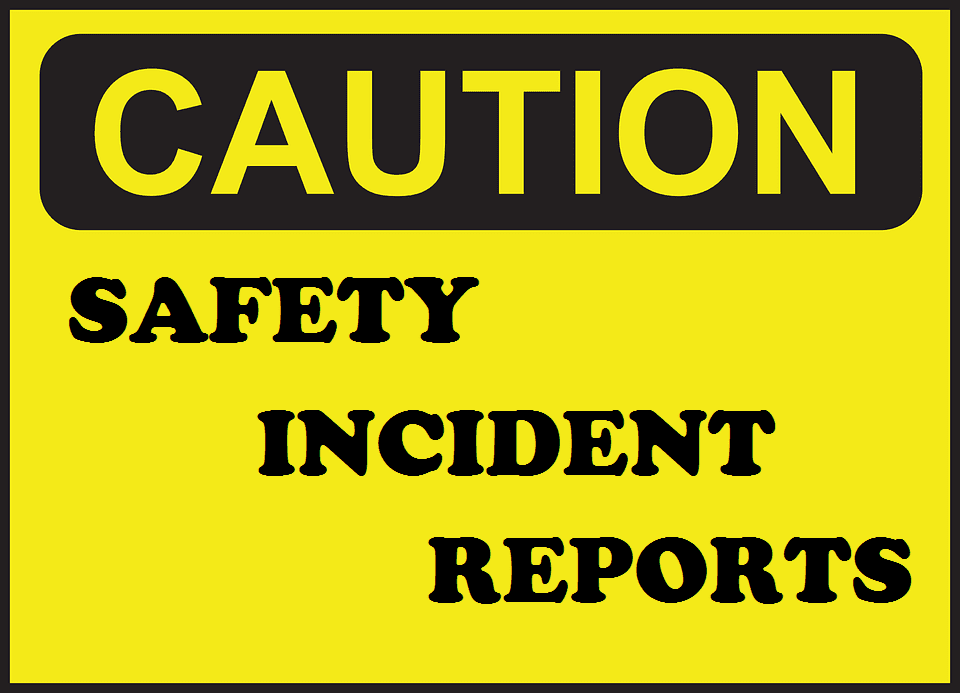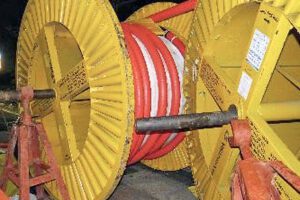Two workers suffer serious fluid injection injuries in separate incidents
Incident
This safety alert provides information on two serious, separate incidents involving high pressure water
cleaning equipment and safety advice for the NSW mining industry.
Incident 1
A worker suffered a fluid injection to his arm from the class B high
pressure cleaning unit he was using when the hose connection fitting
became unscrewed from the base of the gun. The worker was taken
to a nearby hospital where he was air-lifted to Royal North Shore
Hospital in Sydney, where he underwent surgery.
Incident 2
Two workers were using a high pressure cleaner for descaling steel
sets in a service shaft before stopping to add an extension piece on
the gun. With the pressure cleaner turned off, one of the workers held
the gun while the other began changing the extension. The worker
holding gun operated the trigger, releasing residual pressure in the
hose causing a fluid injection injury to the left palm of the other worker.
The injured worker was taken to hospital for surgery.
Investigation
For the first incident, an investigation revealed the connection between the hose and the gun had been
leaking since the start of the shift. Closer inspection indicated little or no damage to the male (tapered)
thread or female thread in the gun. It appears that during use, torque has developed in the hose caused
the fitting to unscrew to the point where it could no longer support the fluid pressure resulting in the injury
to the worker. In the second incident, investigations are continuing, however human and organisational
factors may have influenced the failure to isolate and test for dead before undertaking the extension
changeout.
Recommendations
An escape of pressurised fluid in the workplace represents a failure of a risk control to a major hazard
(pressurised fluids) that may cause serious or fatal injury.
Mine operators are reminded that effective isolation and energy dissipation is a critical risk control when
working on high pressure fluid systems.
High pressure fluid system componentry must be designed, selected and assembled by people
competent in high pressure fluid delivery systems. Hose fittings and connections must be compatible and
work together as a system. Replacement parts should be original equipment manufacturer’s (OEM)
replacement parts or of equivalent specification.
Mine operators and contract service providers who use high pressure water cleaning equipment should:
1. review and communicate the recommendations of this safety alert to workers under their
supervision
2. ensure workers are trained and competent to perform effective isolation and energy dissipation
and know when isolation and dissipation needs to be applied
3. inspect delivery hose, connection fittings and guns are to OEM specification and are fit for
purpose
4. inspect delivery hose to gun connections for the ability to permit freedom of rotation of the gun
relative to the hose. Connections without freedom of rotation need to have controls to prevent
hose torque that may cause the connection to become unscrewed.
5. review Safe Work Australia Guide for managing risks from high pressure water jetting and review
high pressure cleaning activities for:
? equipment safety standards
? adequacy of pre-start checks
? work practice standards
? maintenance standards
? personal protective equipment.
6. Review the potential application of hose burst protection (sleeving) on the delivery hose to gun
where workers may be exposed to hose or connection burst potential.
7. Review the previously released safety alerts and guidelines:
? SB13-01 Fluid injections result in surgery
? SB12-03 Fluid power isolation failures
? SA06-16 Fatal high pressure hydraulic injection
? SA09-04 Hydraulic injection near miss
? MDG 41 Fluid power system safety
? MDG 40 Hazardous energy control














Add Comment